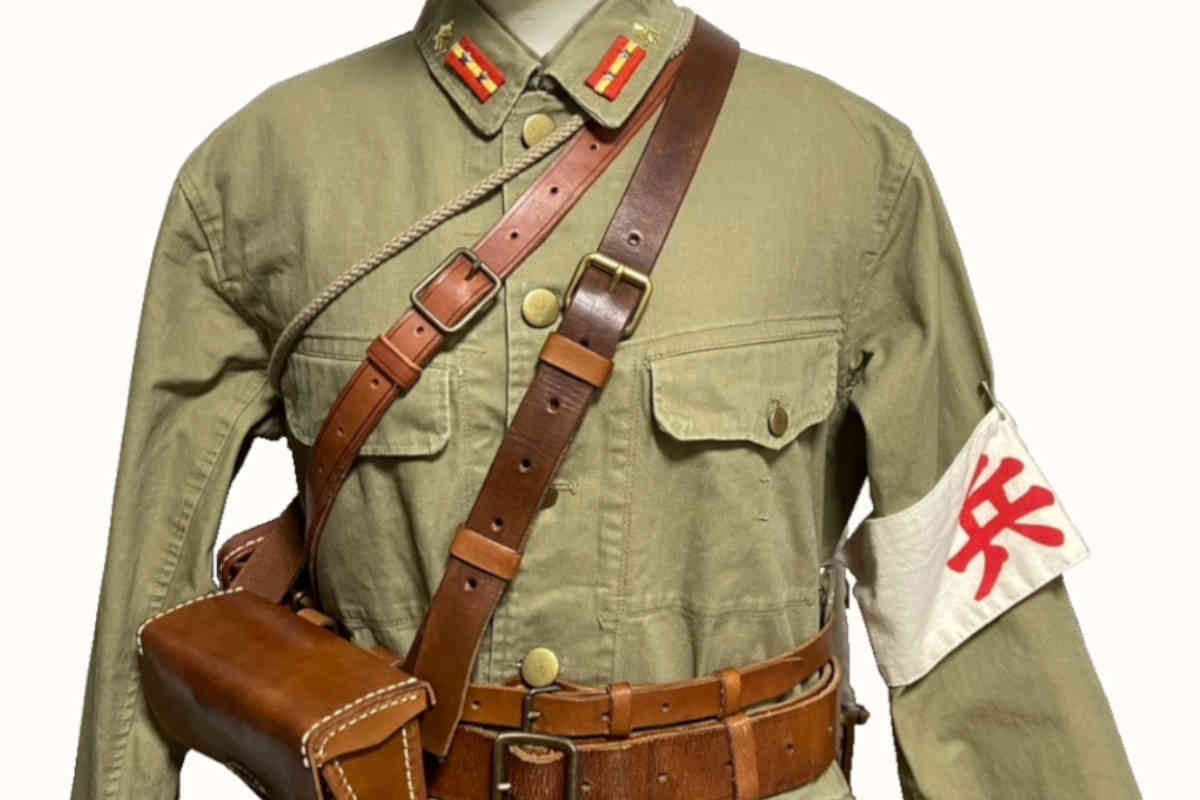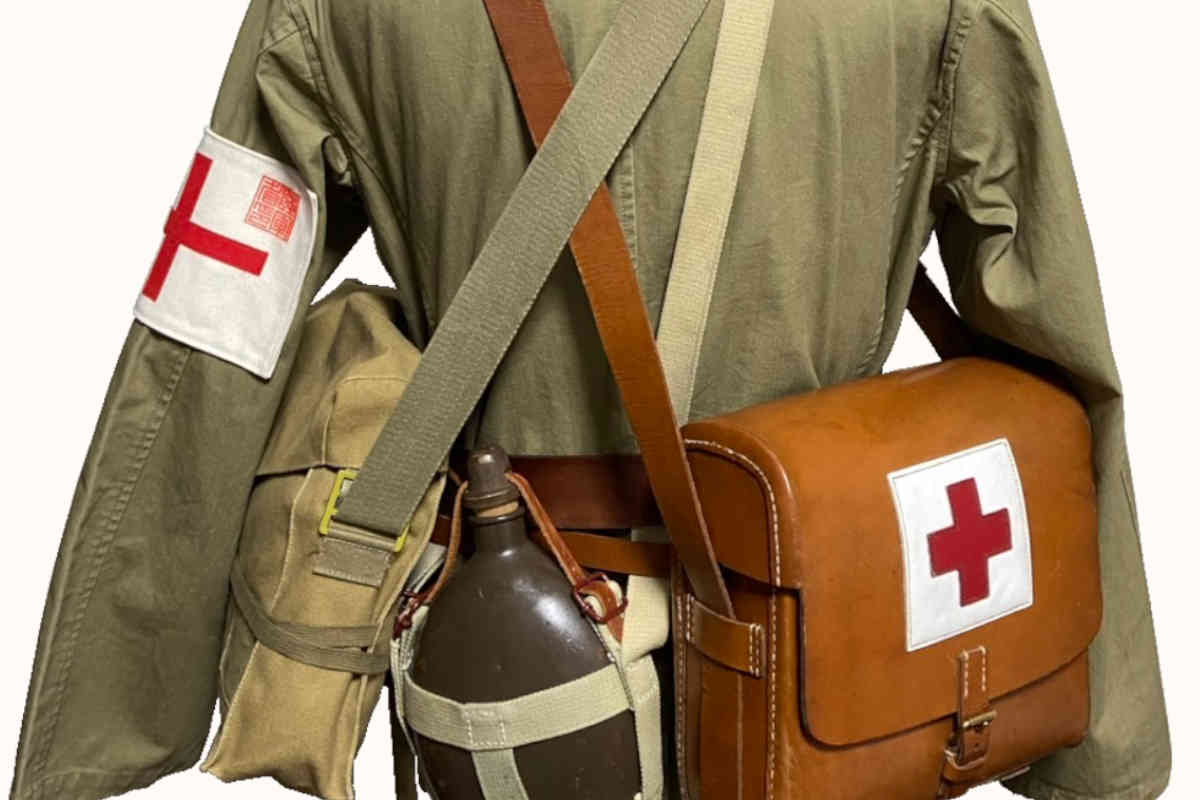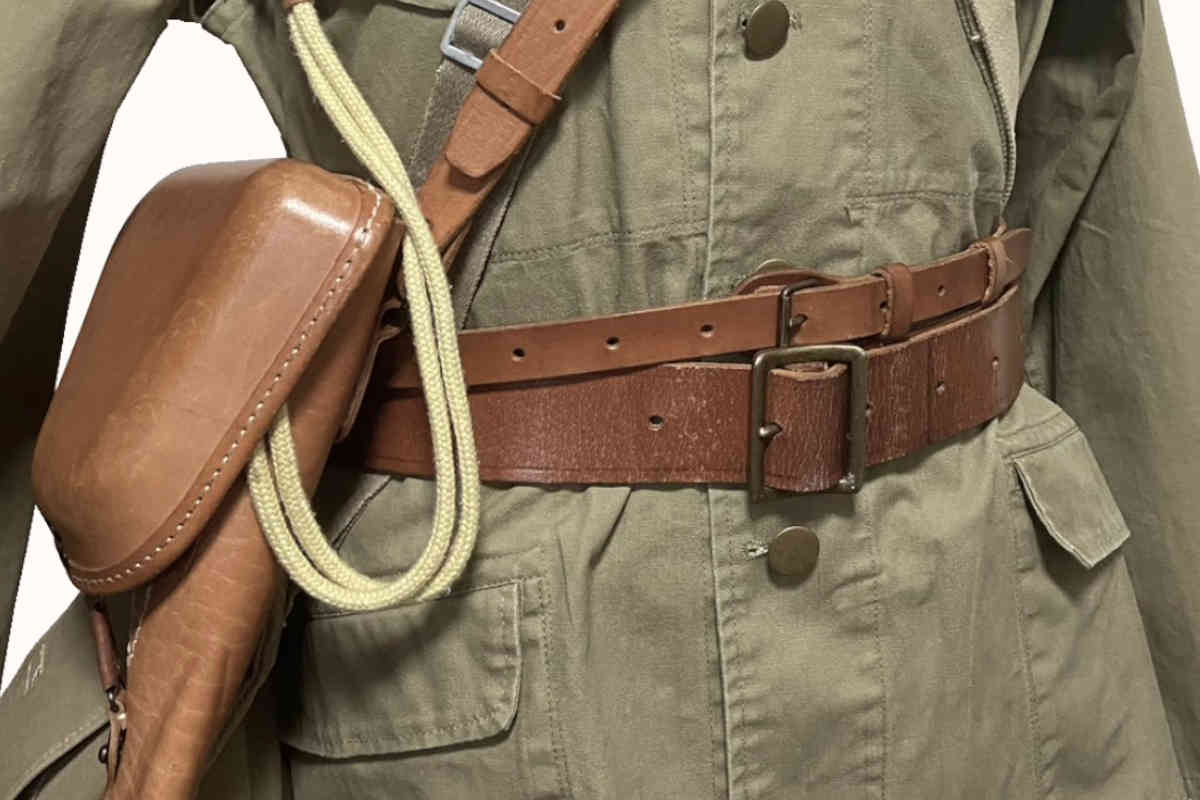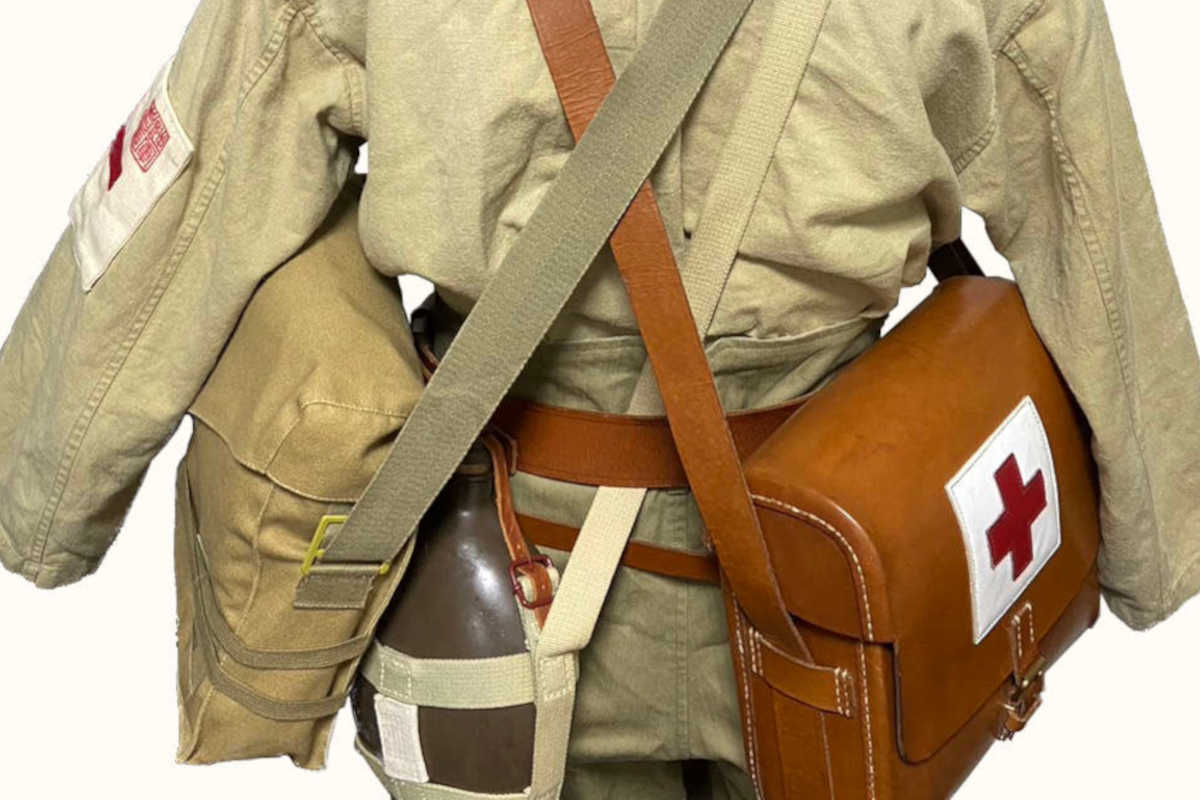Recreate the attire of the Imperial Japanese Army soldiers, by using military uniforms and equipment, to replicate their dressing style from that era.
This is an example of a military police (憲兵/Kempei) non-commissioned officer wearing the Type 98 Summer Tunic. In the case of the Japanese Army, the lowest rank for military police is Senior Private, so care must be taken when recreating this. To become a military police officer, one had to apply to and graduate from the Military Police School (Kenpeitai Training Unit) after serving in a general branch of the military. As of 1943 (Showa…
This is an example of the attire worn by Army Medical Department non-commissioned officers and soldiers using the Type 98 Summer Tunic. In this example, the rank is Sergeant, and the individual is wearing the Medical Department identification insignias established in Showa 18. A medic in Type 98 Summer Tunic (front view)A medic in Type 98 Summer Tunic (rear view) As explained in the article on medics wearing the Tropics 2/3 Sleeves Shirt, non-commissioned officers…
In the case of the Japanese Army, certain non-commissioned officers and soldiers with specific duties or roles carried pistols. Here are examples. Cavalry Tank Crew Military Police Heavy Machine Gunners and Light Machine Gunners in the Infantry In this article, I would like to introduce the general method of carrying pistols for non-commissioned officers and soldiers. Procedure for Wearing a Pistol Holster First, hang the Bread Bag (Zatsu-no/雑嚢) on the right side and the canteen…
Overview This is an example of the attire worn by Army medic wearing a Tropics 2/3 Sleeves Shirt (Bōsho-juban/防暑襦袢). Also, wearing the Type 98 Summer Trousers on the lower half. A medic in tTopics 2/3 Sleeves Shirt (front view)A medic in tTopics 2/3 Sleeves Shirt (rear view) Imperial Japanese Army's tropical clothing includes three types: Tropics Tunic (Bōsho-i/防暑衣) :It has a jacket-like shape that can be worn with an open collar, and it also has…



